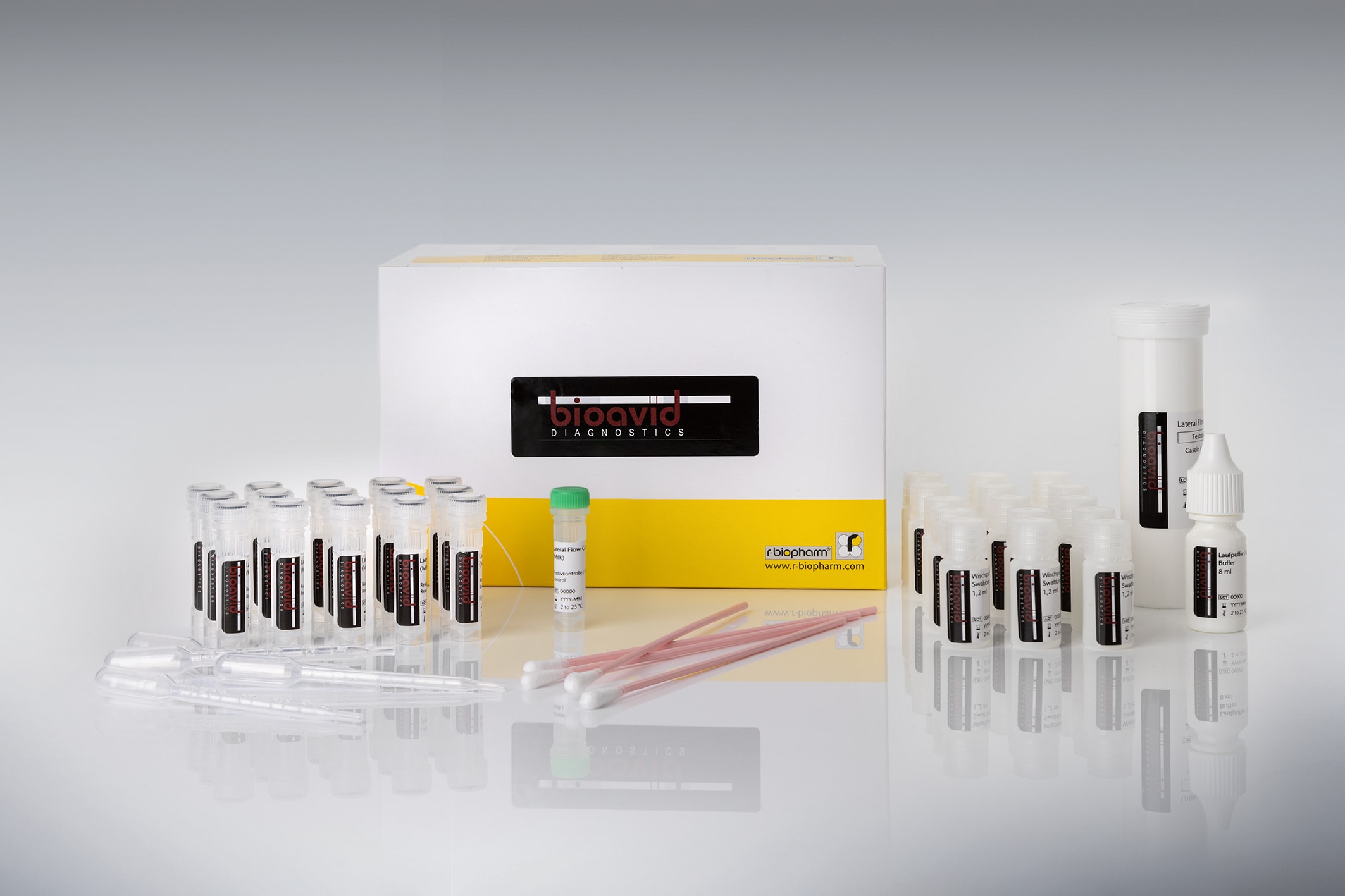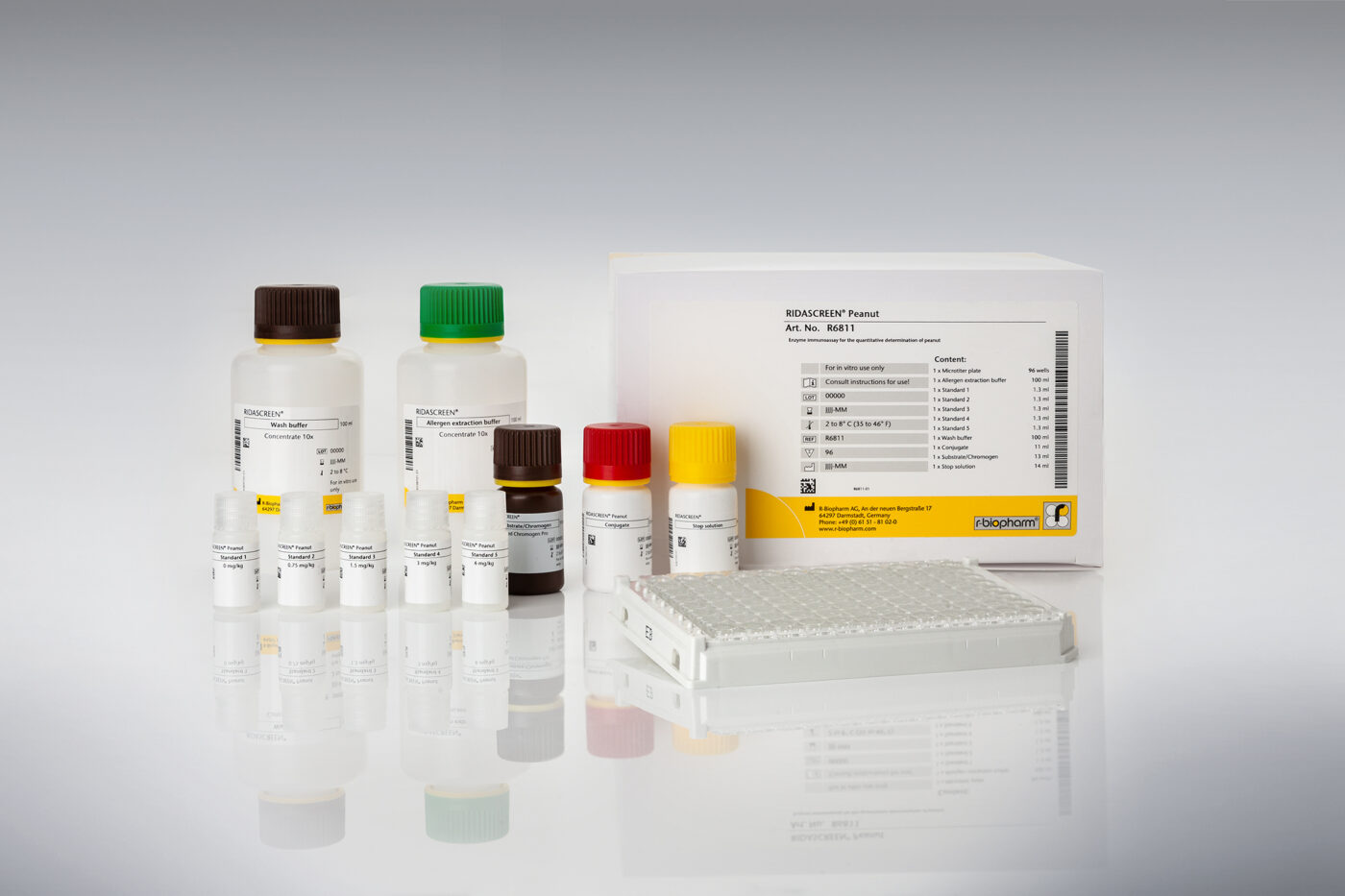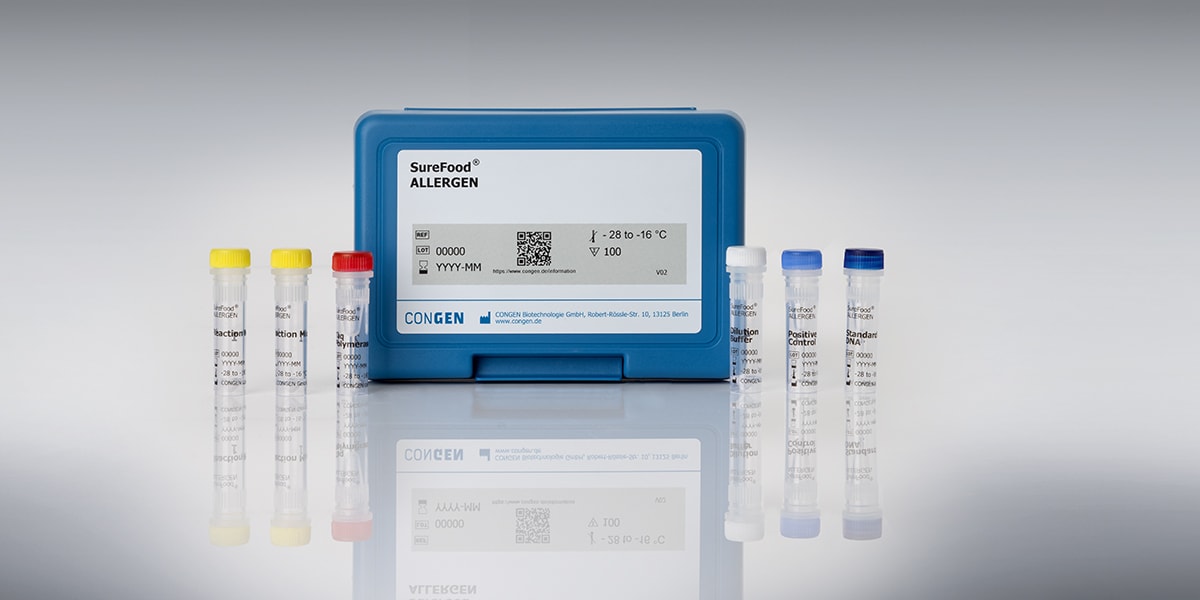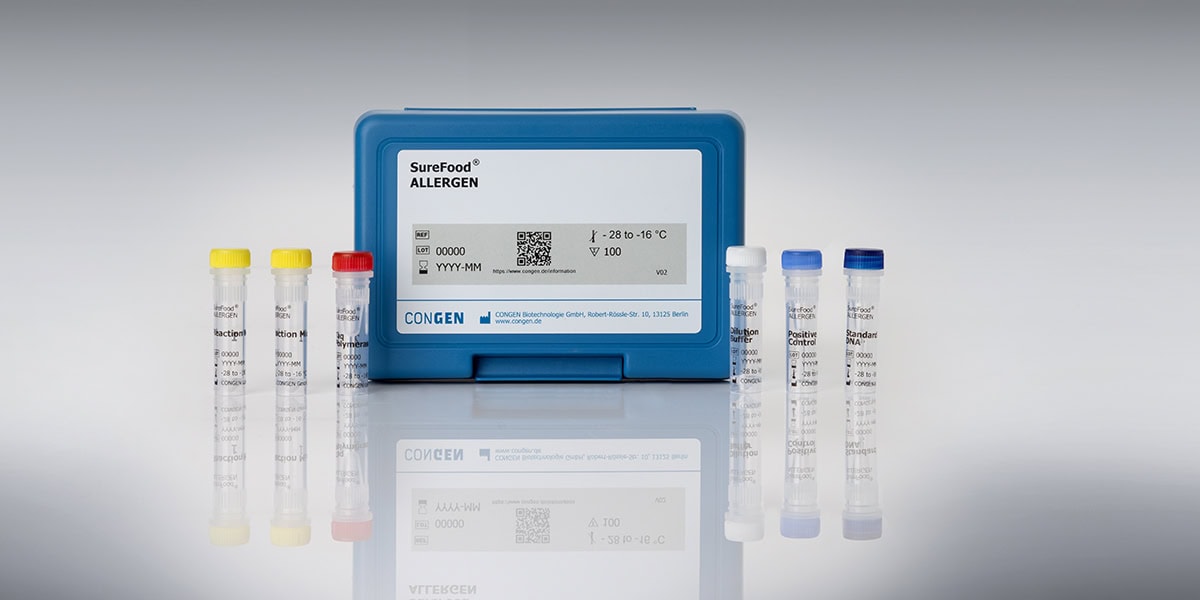
bioavid Lateral Flow Peanut incl. Hook line
Art. No. BLH706-15
Product info about bioavid Lateral Flow Peanut incl. Hook line
Intended use
The Lateral Flow Peanut (Art. No. BLH706-15), with included hook line from bioavid, is an immunochromatographic test for the sensitive and qualitative detection of peanut residues on surfaces (e.g. swab test for the hygiene control in food production lines), in cleaning / process water (CIP water) and food samples. The integrated hook line prevents false negative interpretation of high positive samples.
The test kits contain everything necessary for the analysis. Only for food sample preparation, additional materials (mixer and centrifuge/filters) are required.
General Information
Although peanut (Arachis hypogaea) belongs to the legumes and not to the nuts, its taste and its usual consumption is similar to tree nuts. So to speak, peanut is one of the most popular “nuts” worldwide. Peanuts are very common ingredients of chocolate products and also consumed as snacks and in bakery products such as cookies. In 2023, 50 million tons peanut were produced worldwide, stating the importance of peanut as a food product.
With 25 %, the fraction of proteins in peanuts is very high. Many of these proteins are known for being allergenic, such as Arachins and Conarachins, which are contained in relative high amounts. Peanut is also one of the five foods, which are the most frequent cause of food allergies. Allergies against peanuts are among the most severe allergies and can lead to life-threatening anaphylactic shocks. Consumption of probably less than a milligram of peanut can induce allergic reactions in very sensitized individuals. Therefore, labeling of peanut containing products is very important and compulsory in the USA and the European Union as well as in many other countries. The main threat for sensitized individuals is contamination of peanut in food, which is intended to be peanut-free (e.g. peanut traces in chocolate, which should not contain peanuts). Until now, there is no cure for food allergies. The only effective treatment is a diet with strict avoidance of foods containing peanuts. Therefore, it is even more important to avoid cross contamination, which can lead to accidental consumption by allergic patients. If an allergen is present as a product ingredient, it must be indicated on the food label according to the regulation (EU) No. 1169/2011. Similar regulations exist e.g. in the USA, Canada, Australia and New Zealand.
To avoid allergic reactions, the safety of foods is ensured by the labeling of allergenic ingredients. Nevertheless, a high risk is still an unintended presence of allergens by cross-contamination due to the food process. It is therefore important to avoid and detect cross-contamination (e.g. due to residues on production lines). The bioavid rapid tests can be used for various applications to detect cross-contamination. For example, incoming raw materials or the effectiveness of the cleaning of production facilities can be checked.
An important challenge with the safe and fast LFD analysis are false negative results due to very high allergen concentrations in the test sample. The so-called “high dose hook effect” (or “overload effect”; Standard EN 15633-1. 2019) is observed when a very high amount of an analyte is present in the sample. In this case, the development of the test line can be inhibited and there is a risk that the test result will be falsely evaluated as negative (or analyte undetectable). The hook line on the test strip makes this effect visible. A missing hook line indicates a high allergen content in the sample and can no longer be evaluated as negative. The evaluation card for the bioavid test strips with hook line can be downloaded here.
The bioavid dip sticks are an easy-to-use method and enable a quick and reliable analysis. The application is very simple and can also be carried out by personnel without laboratory education. The processing of all bioavid parameters is identical and can be downloaded here as a flyer. All test kits can be stored at room temperature and are therefore an ideal tool for direct testing in the field, in production facilities or for rapid food testing.
Strongly colored (e.g. coffee, tea, spices, wine), polyphenol / tannin containing, oily or acidic / alkaline samples (e.g. juices) should be extracted with the Absorbent Buffer (Art. No. BS810-15). The buffer decolorizes or neutralizes solutions to avoid false positive results and minimize matrix effects.
For the analysis of non-validated samples, the document « SOP Verification Solid Sample Test » (standard operating procedure) can be used. We also offer a paid service for the verification of non-validated matrices.
Benefits:
• Better safe than sorry: Included hook line for safe identification of high positive samples
• Uniform procedure for all bioavid parameter
• Easy documentation with RIDA®SMART APP Allergen (more information)
• Versatile: applicable for surface-testing, CIP water and food samples (raw and processed)
Accessories
| Specifications | |
|---|---|
| Art. No | BLH706-15 |
| Test format | 15 test strips (15 determinations) |
| Sample preparation | • Surfaces (swabbing): swab surface with PBS-moistened swab and wash out the swab in the reaction vial • Liquid samples (e.g. CIP water): no preparation |
| Incubation time | 5 min Roomtemperature 2 - 25 °C (35 - 77 °F) |
| LOD (Detection Limit) | (CIP) water: 0.5 µg/mL (ppm) Surfaces (swab samples): 0.02 µg/cm2 |
| Detected analyte | Peanut residues |
| Evaluation | Visual evaluation |




